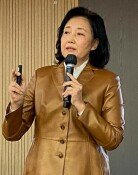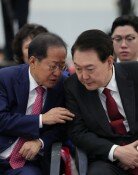PM's Tokyo visit should be a chance to restore bilateral relations
PM's Tokyo visit should be a chance to restore bilateral relations
Posted October. 19, 2019 07:38,
Updated October. 19, 2019 07:38
The mood for reconciliation is being created between South Korea and Japan amid South Korean Prime Minister Lee Nak-yeon’s planned visit to Japan on October 22 to attend Japan’s Emperor Naruhito’s enthronement ceremony. Prime Minister Lee is expected to deliver South Korean President Moon Jae-in’s letter to Japanese Prime Minister Shinzo Abe that is aimed at improving bilateral ties. Lee said he will put in best efforts so that his meeting with the Japanese prime minister would play the role as a stepping stone for a South Korea-Japan summit within the year.
During an Upper House budget committee session on Wednesday, Abe appeared to tone down his rhetoric, by saying that it is important to continue dialogue and South Korea is an important neighboring country.
President Moon Jae-in’s first letter to the Japanese prime minister signals that Moon wants to restore dialogue with Japan. A bilateral summit between South Korea and Japan is urgent in that restoring trust between the two leaders is a must in order to mend strained bilateral relations. Moon and Abe have not had a bilateral summit for a year since they last met at the UN General Assembly in September last year. Since there are several occasions, where Moon and Abe can meet within the year, including the ASEAN Plus Three (Oct.31-Nov.4) in Thailand, APEC Summit (Nov. 16-17) in Chile, and South Korea-China-Japan trilateral summit (late Dec.) in China, the two could have a chance to sit down for talks if they’re willing to.
A dispute between South Korea and Japan triggered by the South Korean Supreme Court’s ruling on compensation for wartime forced labor has moved from diplomacy to economy and security, and the two countries have huge differences with regard to its solution. But if the two leaders could meet and confirm their willingness to mend ties and restore confidence, they will be able to find a way to resolve the problem through working-level diplomacy. The first thing to do for Japan would be to withdraw export control measures and for South Korea to reconsider ending the intelligence-sharing agreement with Japan. Fortunately, there are some diplomatic chances of a dialogue between the two countries, including the South Korea-Japan Parliamentarians’ Union to be held in Tokyo on October 31 and South Korean National Assembly Speaker Moon Hee-sang’s planned visit to Japan on November 4 for a meeting of parliamentary speakers of G20 countries.
South Korea and Japan have kept blaming each other for their soured relations. But now they are running out of time given that the General Security of Military Information Agreement (GSOMIA) expires on November 22 and the seized assets of two Japanese companies could be liquidated within the year according to the South Korean Supreme Court’s ruling. The two neighboring countries should at least hold a summit within the year so that they can avoid an unusual diplomatic situation that there has been no summit for over a year. South Korea-Japan relations should be dealt with cautiously like handling a “glass bowl,” which Prime Minister Lee put it, but the two countries should produce tangible outcome in a timely manner.







